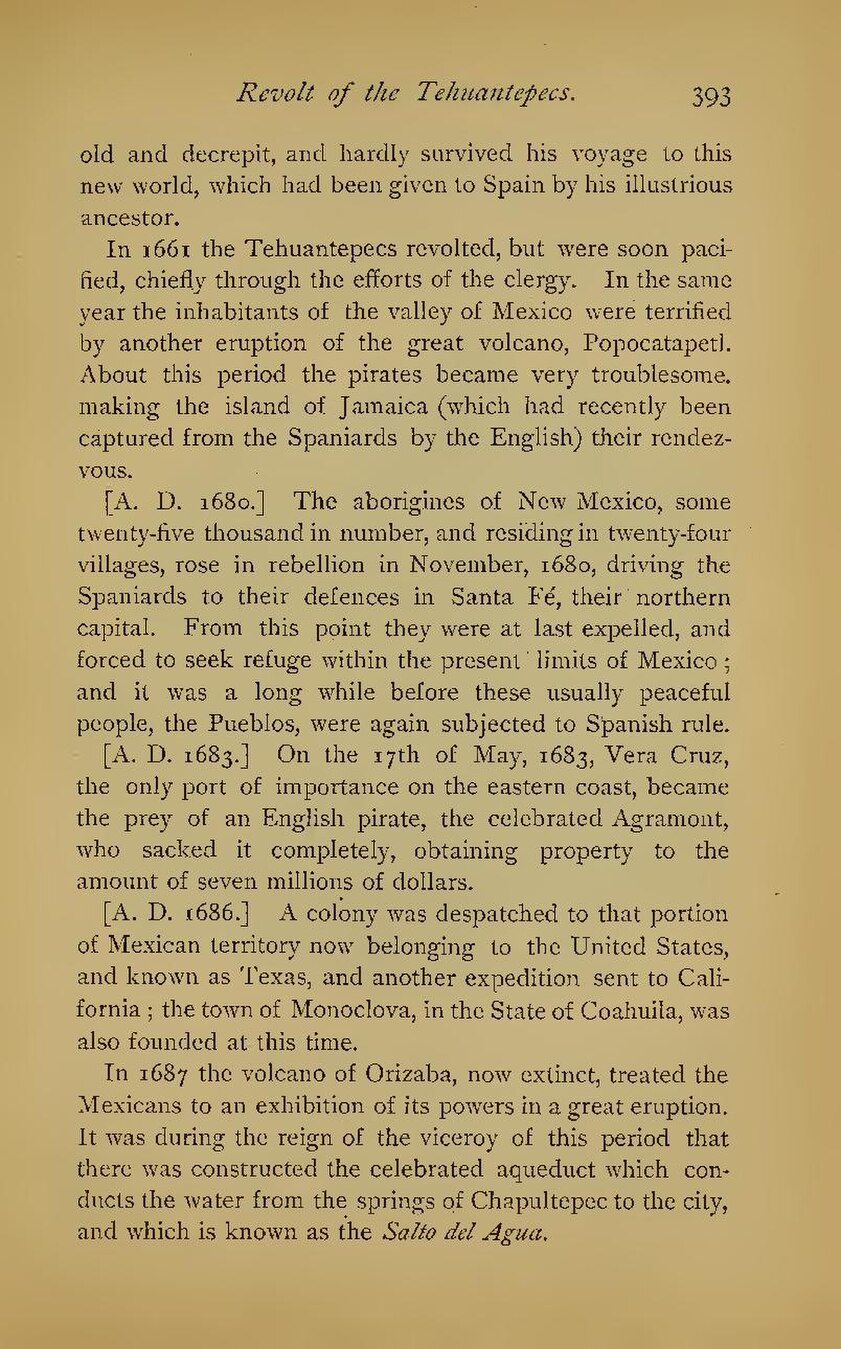old and decrepit, and hardly survived his voyage to this new world, which had been given to Spain by his illustrious ancestor.
In 1661 the Tehuantepecs revolted, but were soon pacified, chiefly through the efforts of the clergy. In the same year the inhabitants of the valley of Mexico were terrified by another eruption of the great volcano, Popocatapetl. About this period the pirates became very troublesome, making the island of Jamaica (which had recently been captured from the Spaniards by the English) their rendezvous.
[A. D. 1680.] The aborigines of New Mexico, some twenty-five thousand in number, and residing in twenty-four villages, rose in rebellion in November, 1680, driving the Spaniards to their defences in Santa Fé, their northern capital. From this point they were at last expelled, and forced to seek refuge within the present limits of Mexico; and it was a long while before these usually peaceful people, the Pueblos, were again subjected to Spanish rule.
[A. D. 1683.] On the 17th of May, 1683, Vera Cruz, the only port of importance on the eastern coast, became the prey of an English pirate, the celebrated Agramont, who sacked it completely, obtaining property to the amount of seven millions of dollars.
[A. D. 1686.] A colony was despatched to that portion of Mexican territory now belonging to the United States, and known as Texas, and another expedition sent to California; the town of Monoclova, in the State of Coahuila, was also founded at this time.
In 1687 the volcano of Orizaba, now extinct, treated the Mexicans to an exhibition of its powers in a great eruption. It was during the reign of the viceroy of this period that there was constructed the celebrated aqueduct which conducts the water from the springs of Chapultepec to the city, and which is known as the Salto del Agua.
